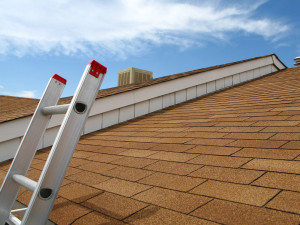 Roof problems need to be fixed before they get worse. If you wait too long, you will have to get a new roof.
Roof problems need to be fixed before they get worse. If you wait too long, you will have to get a new roof.
How to detect roof problems
You might have already noticed signs of dampness, or water leaking through the leak. By conducting some basic checks you can determine the condition of your roof. Stand in your garden of somewhere else and use binoculars to get a better view of the roof.
What to look for on the outside
Missing slates or tiles are a sign that something is wrong with the roof. You also need to look for blocked or sagging gutters. Leaking joints in a downpipe and cracked mortars also indicate problems. Other potential problems include plants growing on the roof, a leaning parapet wall or chimneystack.
What to look for on the inside
Check the condition of the timbers and the joints between them. Make sure that all joints are tight and timbers dry. The timbers should show no signs of rot. If you can see sunrays coming through your roof, it is a clear indication that a tile or slate is damaged or missing. Damp spots on the ceiling, too, clearly indicate problems.
Flat roofs
If you have got a flat roof, you should look for signs of water pooling. Moss growing on the roof and splits in roof covering also indicate potential problems. Narrow splits in roof covering can be fixed with small repairs. But if the leaks have damaged the timbers, you will have to replace them.
If you are the DIY type, you can climb on to the roof and fix minor problems on your own. But don’t attempt this without scaffolding and safety equipment.
After climbing on the roof, you can remove any plants growing there. You can also remove debris from guttering. In addition, you can tighten screws that support guttering. You may also paint downpipes and cast-iron guttering to prevent rust. Leave more serious problems to a professional.
How to fix leaky downpipes
A downpipe that overflows at a joint may be blocked. In this case, you will have to remove debris from the pipe and clear the gutter.
Major repairs
Damaged or unreliable timber parts need to be replaced with steel plates. In order to replace a rafter, you will have to remove the roof covering. This means a lot of work, but when you remove the roof covering you get to inspect the roof properly.
If the principal rafter does not sit firmly on the walls, you will have to support it on steel brackets. If the chimney stack is leaning, it needs to be fixed urgently. Don’t let it fall as it will cause serious damage.
Cost of repairing
Before installing a new roof, try to get quotes from at least 3 roofing contractors. As far as possible, avoid paying the roofers by the day. Instead, get a quote for the complete job.
Which material to use
Before changing the roof covering, you should get professional advice. The structure of the roof often determines the weight it can carry. Concrete tiles are heavier than clay tiles, but if the latter require excessive overlapping, the weight will be roughly the same.
Choosing the right roof covering material is absolutely necessary. Ask the roofer if you can’t decide which material is good for your roof. Natural materials are more expensive, but they look the best. The cheapest roofing materials available at the moment are interlocking concrete tiles. They are available in a range of colors and patterns. But if you are willing to shell out more money, you can consider artificial slate, natural slate, plain clay tiles, shingles or turf. There are several other options, too. Stone tiles are beautiful but pricey. Slate is expensive.
Shakes and shingles are the most popular roofing materials available at the moment. Metal roofs are also good choices and they last longer.
